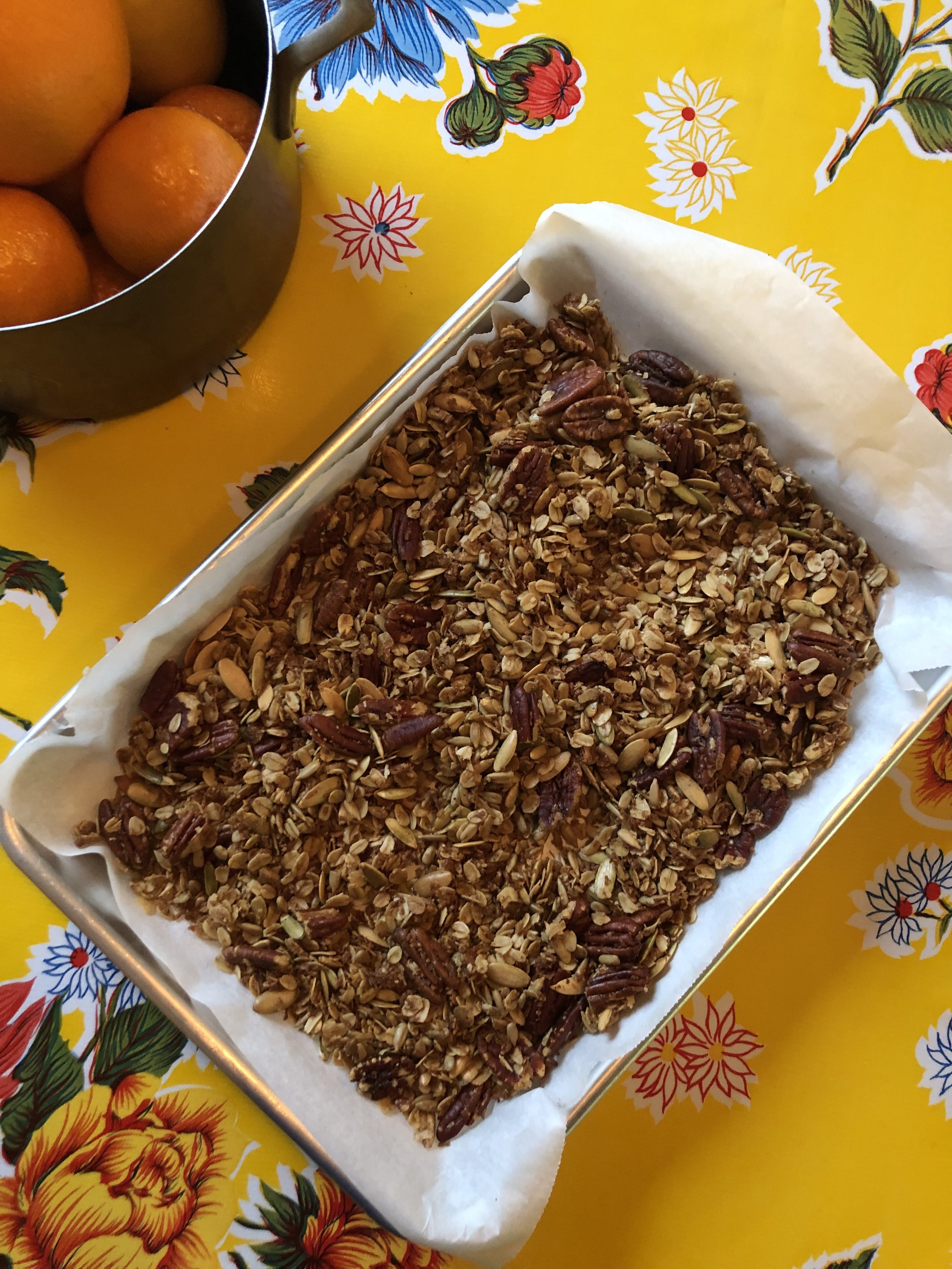Declarations like “I’m going to cook an entire cookbook and then document it with some regularity” don’t come easily. Or perhaps they do, it’s the follow through and commitment that are the tricky parts of the equation. When I decided I was going to attempt this project in mid-December, Todd immediately encouraged me to write about it. To which I responded with a series of concerns and worries about picking a title, how to go about starting, and whether or not this would be more work than simply cooking and enjoying the fruits of my labor. But here I am, several recipes deep and my big announcement out there in the spotlight looking for company.
As a doctoral student with a love of spreadsheets and organizational tools, it should come as no surprise that I’m tackling this cooking journey the only way I know how: by reading Salt Fat Acid Heat from cover to cover, highlighting sections that seem especially important, and figuring out what Samin Nosrat’s thesis is. Yes, I am breaking down and digesting her work as if it were a text for one of my classes and it’s actually a delightful process.
Nosrat’s thesis is hinted at in the title of both her book and mini-series. She argues that there are four elements essential to being a great cook: salt, fat, acid, and heat. If we understand and employ our understanding of these elements to guide our decision making in the kitchen, at the grill, and when shopping at the farmer’s market, we should be able to transform our cooking from good to great. Through years reading cookbooks, writing, and research that took the form of observing in countless kitchens, working in several restaurants, and conducting world travel in search of flavor through cultural and historical experiences with food, Nosrat landed on these four essential elements. The book is not so much a standard cookbook, but rather a series of treatises on how to use salt, fat, acid, and heat followed by recipes that demonstrate how all of these elements are at play in the creation of really good cooking. In explaining that the layers of fat from cold butter are what makes dough so flaky in a pie crust or that Diamond Crystal salt is the “least salty” salt due to its molecular structure, Nosrat illuminates readers and cooks on the basics of the alchemy and chemistry of cooking and baking with simplicity and clarity.
And while accessibility is made clear through the omission of jargon and the back-to-the-basics recipes included, Nosrat also offers variations that allow each cook to add their flourish through modifications to the recipes based on culturally specific and ingredient-driven flavor profiles. Further, what makes this book extra special is the author’s decision to forgo having photography in the book, employing the handiwork of illustrator Wendy Macnaughton to illustrate the text with gorgeous drawings, humorous marginalia, and fantastic flavor-matching charts. In eschewing stylized food photography, as most cookbooks and food blogs showcase, Nosrat removes a barrier: that of perfection. Rather than instructing us to cook or bake something in the hopes of making it look as good as a professionally styled photograph of a dish, Nosrat frees us up to focus on flavor and understanding the four elements rather than on appearances. I can’t speak for Julia Child, but I feel like she would approve, no?
An additional perk of how Salt, Fat, Acid, Heat is structured is that Nosrat offers recommendations for how to build meals and pair dishes for almost every recipe, based on what flavors and textures go together. I’m telling you, this is a cookbook unlike any other I’ve encountered. My method for approaching this project then, has been to determine what I want to make and when I want to make it, based on what is in season and what goes together. I created a massive spreadsheet of every recipe in the book, with a column that details what season to best eat certain produce or specific dishes (chicken soup and citrus in the winter, cucumbers and basil pesto in the summer) and which dishes go with one another or build upon another (Kufte Kebabs go with Persian-ish Rice and Persian Herb Yogurt, and save the carcass and spine from the Crispiest Spatchcocked Chicken to make Chicken Stock to go in Chunky Tuscan Bean and Kale Soup). I’ve then begun mapping out what I’d like to make each month, trying to cook at least one of the thirteen chicken dishes every month and one or two sweets from the end of the book. Honestly, I’m a little too excited about how I’ve been able to organize the plan of action.
Which leaves us with granola, the very first thing I made out of Salt, Fat, Acid, Heat. Nekisia’s Olive Oil and Sea Salt Granola combines all four of the elements: fat from the olive oil, salt from the fleur de sel, acid from the maple syrup, and heat to transform raw oatmeal and nuts into fabulously crunchy granola. The batch makes a big bowlful that should last me through the first few weeks of the semester and goes beautifully with yogurt. I’m planning to break up a pomegranate to add to my bowl of granola for the rest of the week to add an extra burst of acid, crunch, and color.
Now I’m off to the store to transform some of my leftovers into a sheet pan dinner, which come to think of it, is rather polarizing. Sheet pan dinner, are you a believer or a critic? Do tell!
a baking pan lined with parchment paper and full of fresh-from-the-oven granola with an assortment of toasted nuts and crunchy oats. The pan sits on a yellow floral oilcloth tablecloth next to a copper pot with fresh tangerines.
